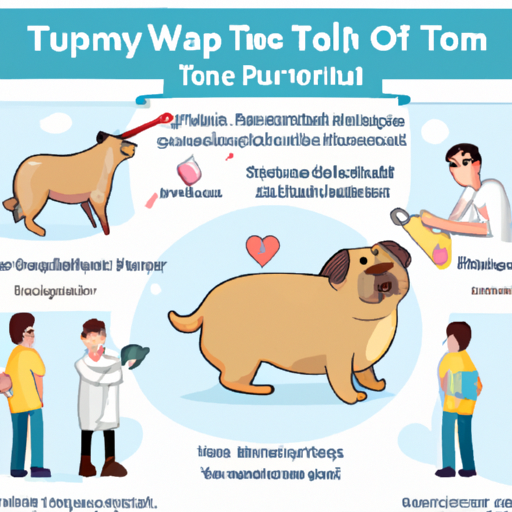Fatty tumors, or lipomas, are among the most common types of tumors that occur in dogs. These benign growths are typically soft, rounded, and moveable, and can appear anywhere on a dog’s body. While not usually a cause for major concern, some pet owners may want to get rid of these fatty tumors for various reasons, such as if they cause discomfort or inhibit the dog’s mobility. Here’s a comprehensive guide on how to handle these fatty tumors in your canine companion.
Key Takeaways
- Fatty tumors, or lipomas, are common in dogs but they’re usually benign and not a cause for major concern.
- If the lipoma is causing discomfort or mobility issues, it may need to be removed via surgery.
- Non-surgical options like diet adjustments and herbal remedies can also help manage lipomas.
- Regular vet visits and monitoring are crucial for early detection and treatment of lipomas.
Table of Contents
- Understanding Fatty Tumors
- When Should You Worry?
- Surgical Options
- Non-Surgical Treatments
- Prevention and Management
- Frequently Asked Questions
Understanding Fatty Tumors
Fatty tumors, technically known as lipomas, are benign growths made of fat cells that can develop in any breed of dog, but are more common in overweight dogs and middle-aged to senior dogs. While these soft, doughy lumps under the skin are usually harmless, it’s always best to get any new lump on your dog checked out by a vet to rule out more serious conditions like malignant tumors or cysts.
If you’re unsure what a lipoma looks like, you can check out this helpful guide on OneTopDog, which provides detailed information and images of dog lipomas.
When Should You Worry?
Lipomas are typically non-painful and do not cause any discomfort to the dog. However, if the lipoma grows large enough to impede your dog’s movement or is situated in a location that makes it uncomfortable, it may need to be addressed.
A more serious variant of lipomas are infiltrative lipomas. These lipomas invade the surrounding muscles and tissues and can cause pain and mobility issues. If your dog’s lipoma seems to be causing discomfort, it’s best to consult with your vet for further evaluation and possible treatment options.
Surgical Options
Surgical removal is the most common treatment for lipomas that are causing discomfort, mobility issues, or are growing rapidly. This typically involves general anesthesia and a simple surgical procedure to excise the lipoma.
However, surgery is not without risks, particularly for older dogs or those with underlying health conditions. It’s important to weigh the benefits and risks of surgery with your vet to make the best decision for your dog’s health.
Non-Surgical Treatments
For lipomas that are not causing significant issues, non-surgical treatments may be an option. These can include diet adjustments to help manage your dog’s weight as obesity can contribute to the development of lipomas.
Herbal remedies, such as turmeric, can also be beneficial. Turmeric has anti-inflammatory properties and may help reduce the size of the lipoma.
It’s important to discuss any non-surgical treatments with your vet to ensure they are safe and effective for your dog. More information on non-surgical treatments can be found here.
Prevention and Management
While there’s no surefire way to prevent lipomas, maintaining your dog’s healthy weight and providing a balanced diet can help. Regular exercise and physical exams are also crucial for early detection and treatment of lipomas.
For further tips on managing your dog’s health, check out this comprehensive guide on OneTopDog.
Frequently Asked Questions
1. Are fatty tumors dangerous for dogs?
Most lipomas are benign and pose no danger to dogs. However, it’s always best to get any new lump checked out by a vet to rule out more serious conditions.
2. Can fatty tumors be prevented?
While there’s no surefire way to prevent lipomas, maintaining a healthy weight and providing a balanced diet can help.
3. Can fatty tumors disappear on their own?
In some cases, lipomas may decrease in size with diet changes and herbal remedies, but they typically do not disappear completely without surgical intervention.
4. Should all fatty tumors be removed?
Not all lipomas need to be removed. If the lipoma is not causing discomfort or mobility issues, it can often be left alone. However, if it’s causing problems, surgical removal may be necessary.
Dealing with fatty tumors on dogs can be a concerning and confusing experience for pet owners. With the right knowledge and resources, however, it’s possible to effectively manage this common health issue and ensure your furry friend’s wellbeing. And remember, when in doubt, always consult with your vet or a trusted pet health resource.



